Global SEO
Global SEO is where you set default site-wide settings, on a per-site basis.
The Copy Settings From: dropdown lets you copy settings from one site to another.
General Settings
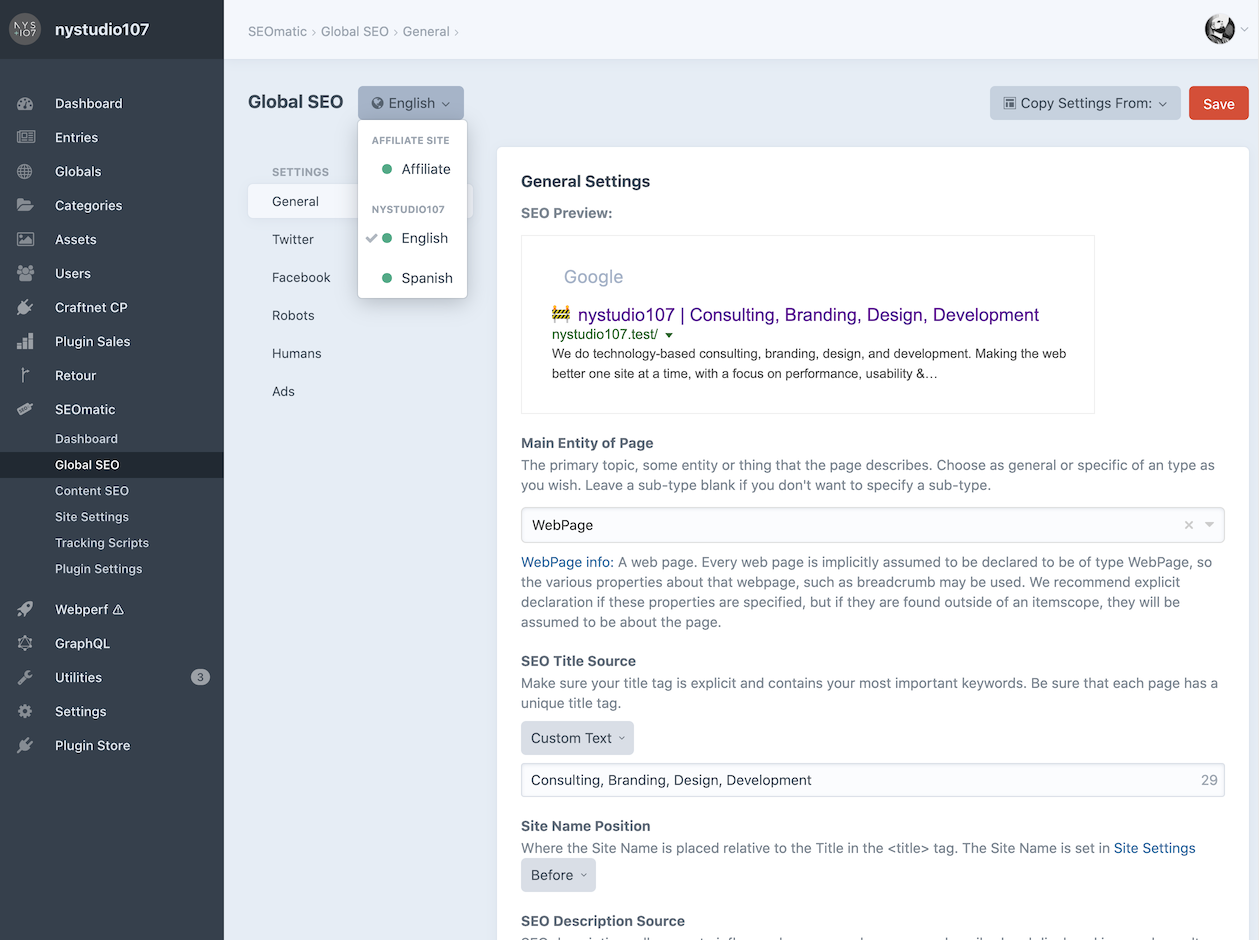
Because meta information should reflect your content, you’ll want designate the fields that SEOmatic extracts the SEO Title, SEO Description, and SEO Image from.
Twitter Settings
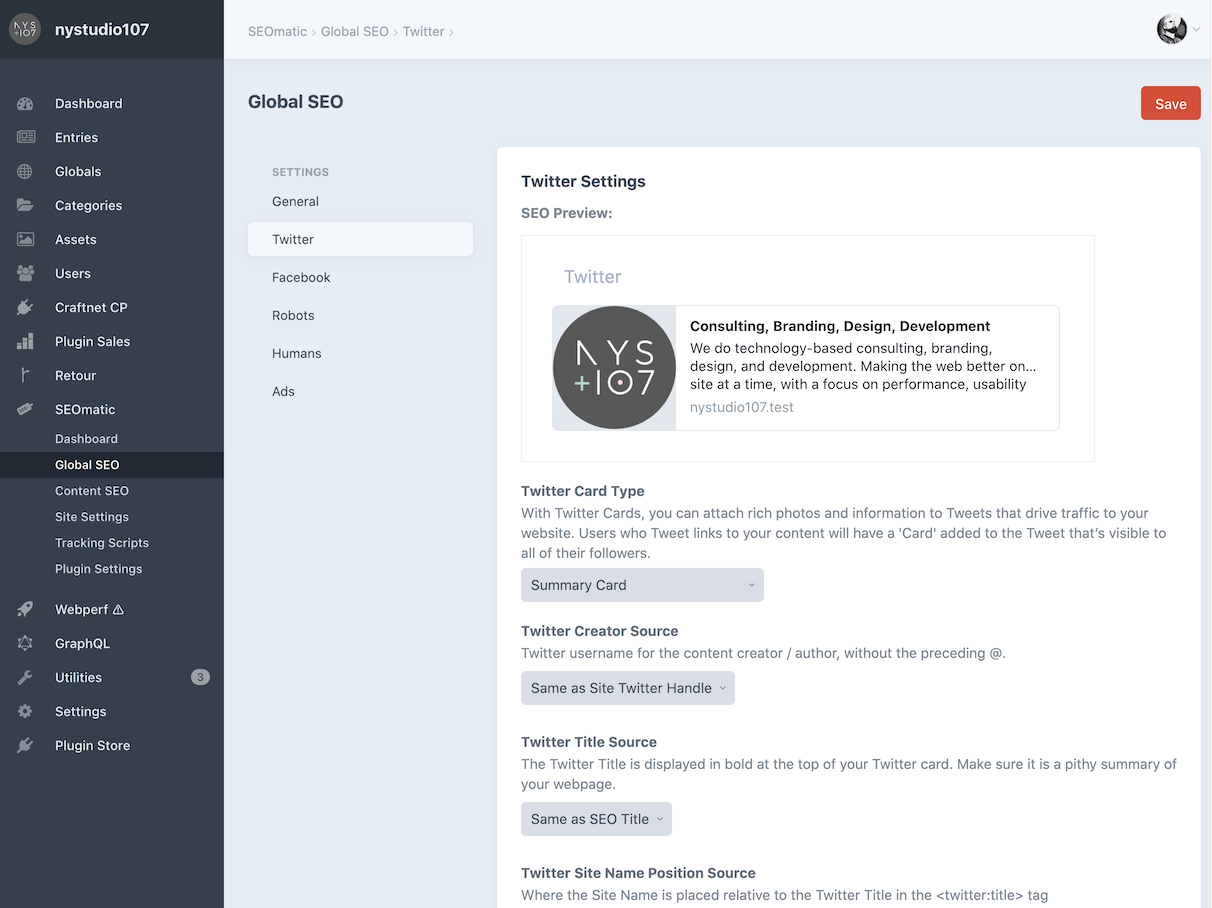
By default, the Twitter settings will mirror what you set in the General section, but you can customize them to your heart’s content.
Facebook Settings
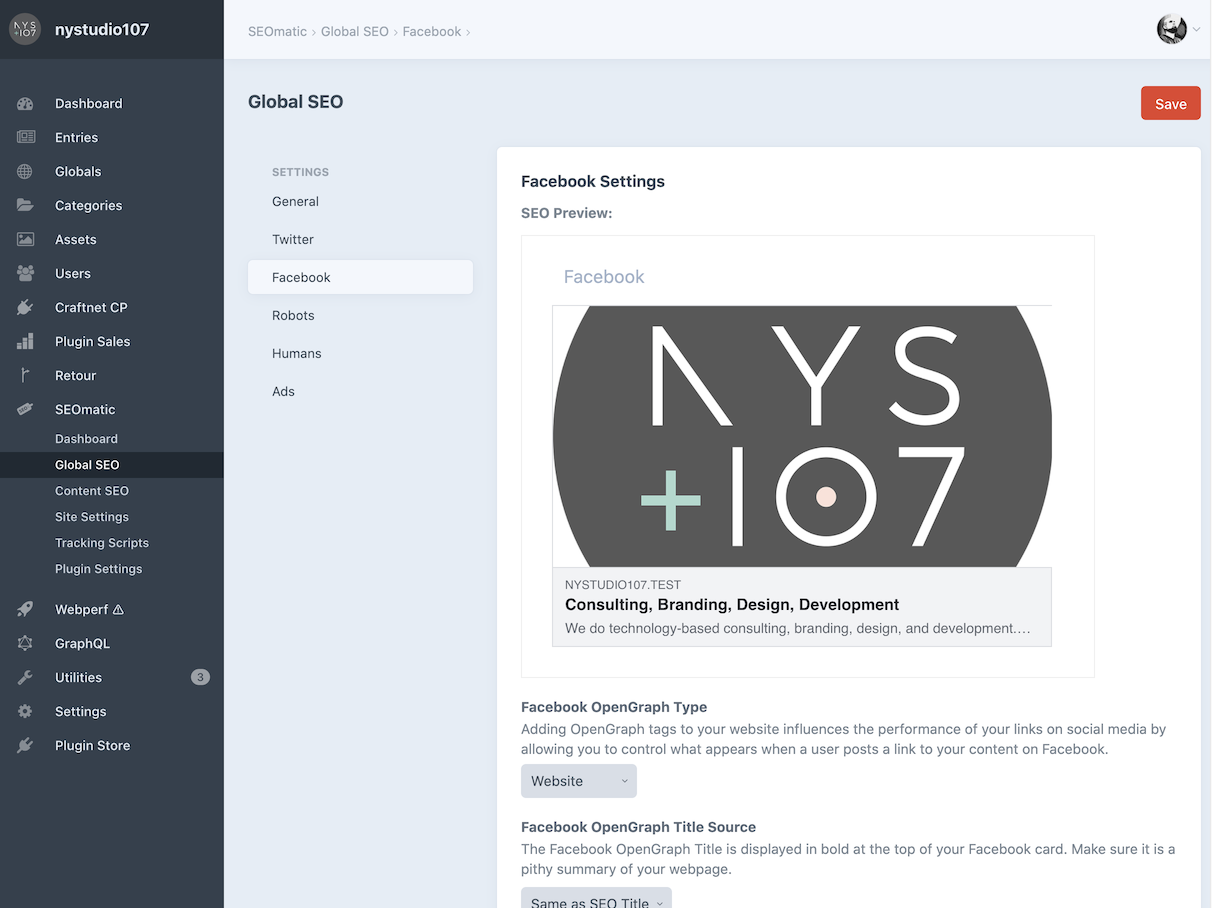
Like the Twitter settings, Facebook settings will also mirror whatever you’ve set in the General section, but you can further customize them here.
Robots Settings
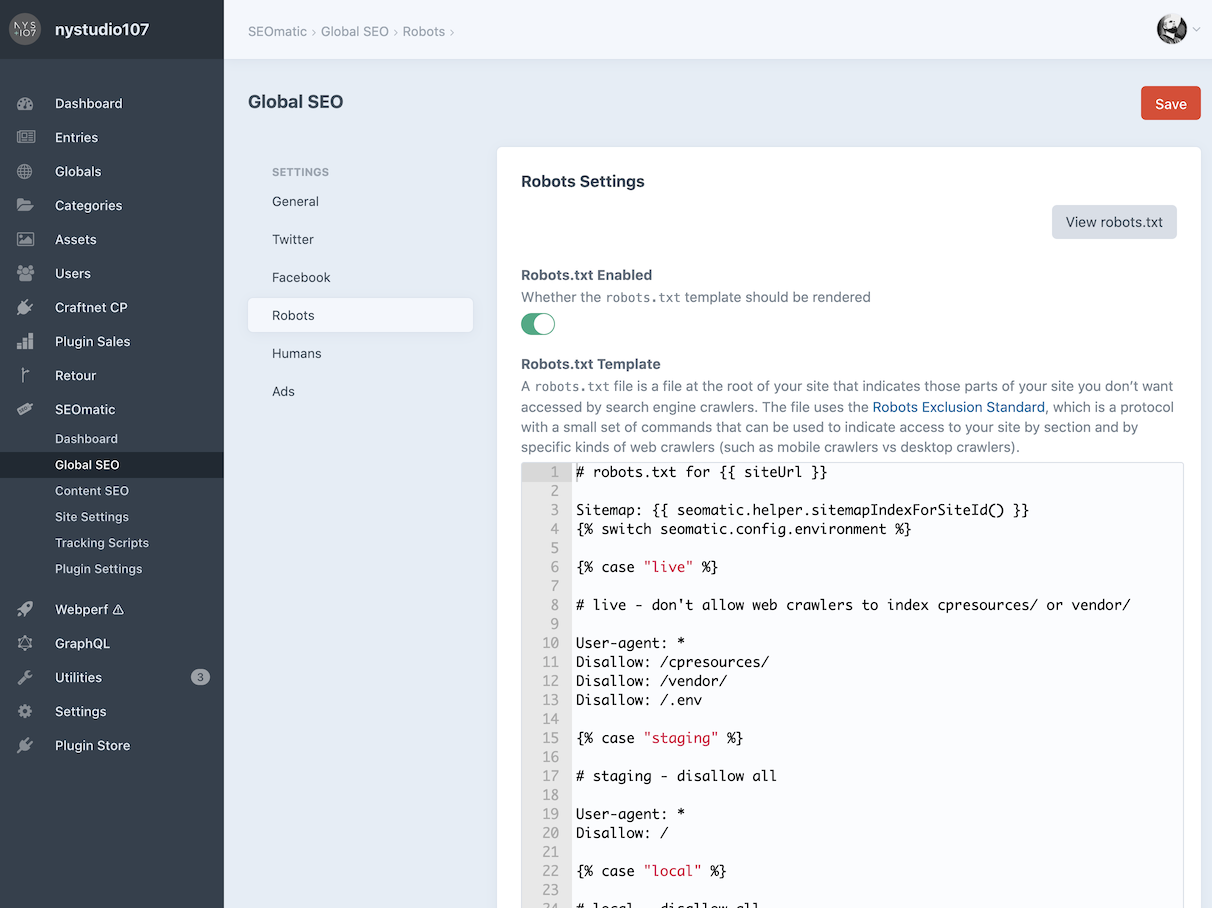
A robots.txt file at the root of your site tells search engine crawlers what they’re allowed to access.
The file uses the Robots Exclusion Standard, which is a protocol with a small set of commands that can be used to indicate access to your site by section and by specific kinds of web crawlers (such as mobile crawlers vs desktop crawlers).
You shouldn’t need to edit the default Robots.txt Template setting, but you can if you like. Click View robots.txt to see how robots.txt is rendered by the template.
Troubleshooting
Two things could prevent SEOmatic from automatically handling /robots.txt requests:
- An actual
robots.txtfile in yourweb/folder, which will take precedence. - An nginx directive that prevents Craft CMS from handling the
robots.txtURL.
If you’re running nginx, make sure that you don’t have a line like this in your config file:
location = /robots.txt { access_log off; log_not_found off; }A directive like this will prevent SEOmatic from being able to service the request for /robots.txt. If you do have a line like this in your config file, comment it out and restart nginx by running sudo nginx -s reload.
Humans Settings
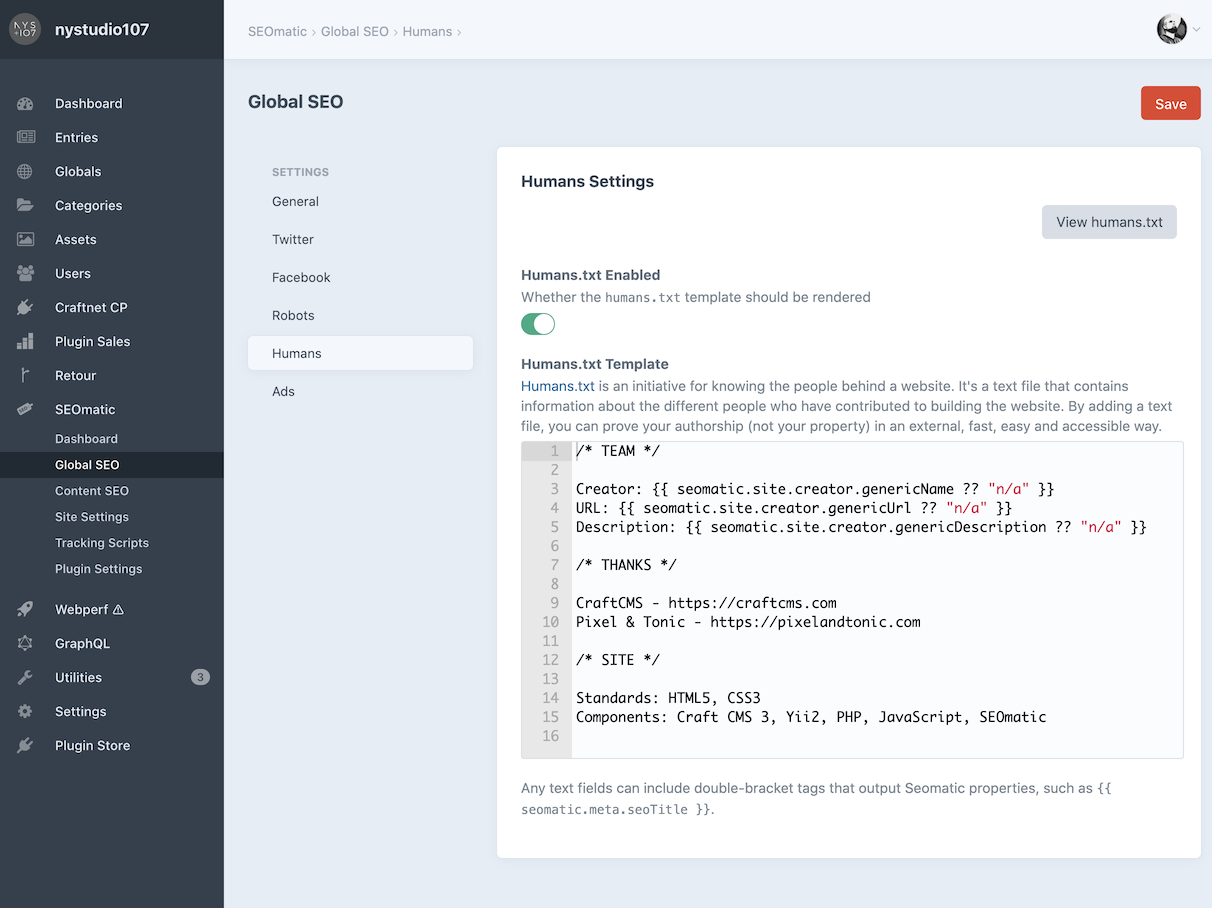
Humans.txt is an initiative for including a text file identifying a site’s creators. By adding a text file, you can prove your authorship (not your property) in an external, fast, easy and accessible way.
Edit the default Humans.txt Template to your heart’s content. Click View humans.txt to view the rendered humans.txt output.
Ads Settings
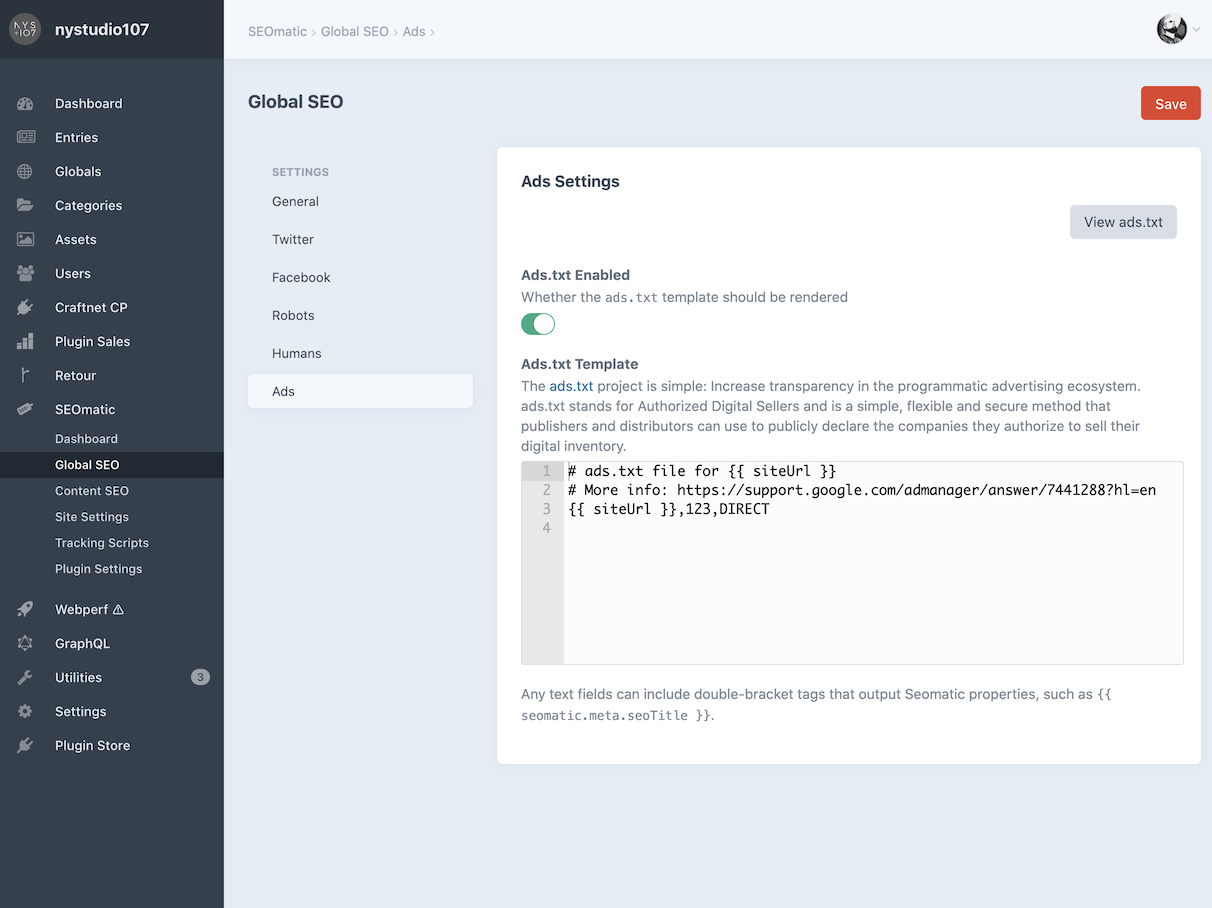
The ads.txt project aims to increase transparency in the programmatic advertising ecosystem. “Ads.txt” stands for Authorized Digital Sellers and is a simple, flexible and secure method that publishers and distributors can use to publicly declare the companies they authorize to sell their digital inventory.
Edit the Ads.txt Template as needed and click View ads.txt to view the rendered output.
Security Settings
The security.txt defines a standard to help organizations define the process for security researchers to disclose security vulnerabilities securely.
Edit the default Security.txt Template as needed and click View security.txt to view the rendered security.txt output.

